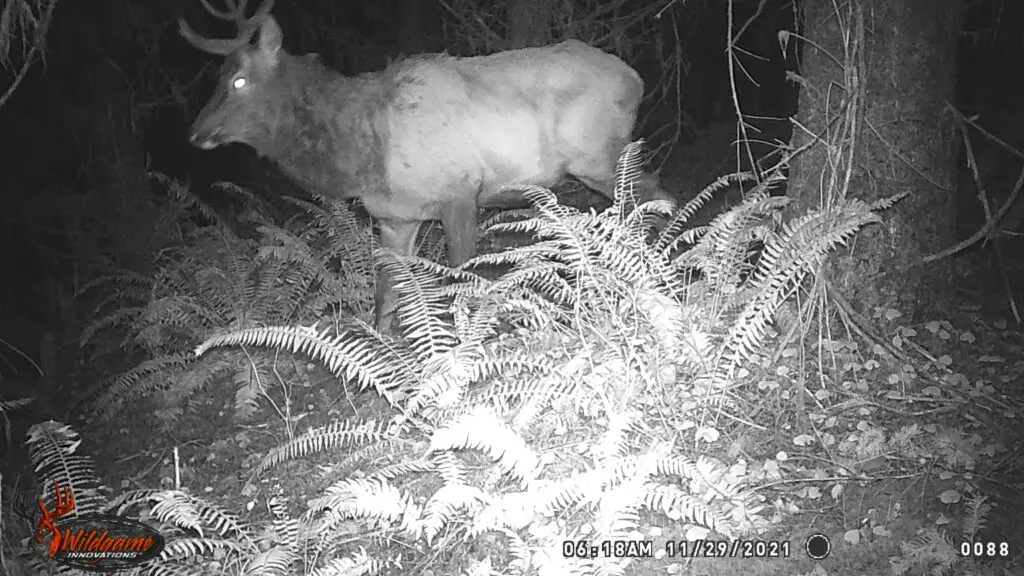
With my 2021 elk hunting season now being over, I get to write about and share some of the many lessons learned and stories from the woods. I know I basically didn’t touch the blog or YouTube channel during this period as I was trying to balance being in the woods, family obligations and joys of having a new puppy in the house.
I did keep my IG/FB followers mostly informed of how things were going though (pacificnwbestlife on IG and facebook.com/pnwbestlife on FB). Read on if you wish to learn about the shot I took on an elk during the season.
First of all some background information for context…I was hunting the late muzzleloader season on the west side of the cascades in a GMU that allowed me to take a 3 pt min bull or a cow / antlerless elk.
I had already shot a deer this year, so while in the GMU I could shoot “any deer”, I didn’t have a tag to do so.
I’m a new hunter. I’ve never shot an elk before and I only have two deer to my name so far. Like several other topics on the blog, I like to write about the experience and the learning journey in hopes that others who are new or thinking about taking up the hobby will feel inspired or even receive some helpful tips to get pointed in the right direction.
If you are new or thinking about taking up big game hunting, I have a special message for you: You can do it!
Yes, it’s a huge learning curve, but don’t be intimidated. The process of learning, the experience of failing while learning itself is totally worth it.
While I didn’t finish the year with an elk, this late season in particular had some incredible victories and lessons learned along the way that will help me going forward.
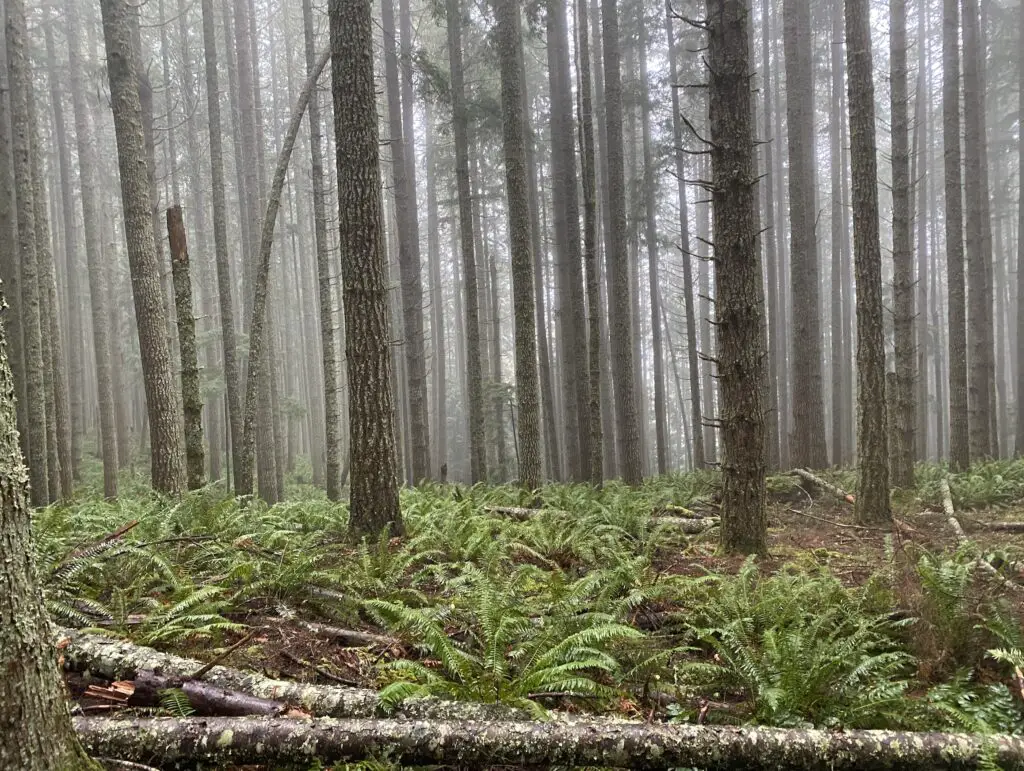
The area I was hunting was moderate elevation, about 1400-2200 depending on which trail I was on. There were several bulls that traveled through the area periodically, but my greatest odds were the cow elk that tended to spend more time in the area I was hunting.
The access point and hunting area were all public land. I met some seriously good people while out hunting, but I never encountered more than two people on any day, and on many days I had the entire area to myself. I primarily hunted on weekdays though too.
The public land tended to be higher elevation and went on for many miles into the mountains, where the lowlands were primarily private land. The cow elk especially liked to spend time on the private land near the public land boundary in the heavily wooded areas.
My approach and strategy to getting it done in the elk woods
I had 4 trail cams, and a pop-up ground blind.
Two of the trail cams could send me pictures in real-time, and for the other two, I had to switch out the SD cards to see what they picked up.
I never captured other hunters on any of my cams as they were placed in heavily wooded areas on game trails.
Last year, I dropped apples in an area in front of a trail cam on a game trail, knowing the elk love apples.
And three cow elk came in within a few days and ate every apple slice at around 9am in the morning.
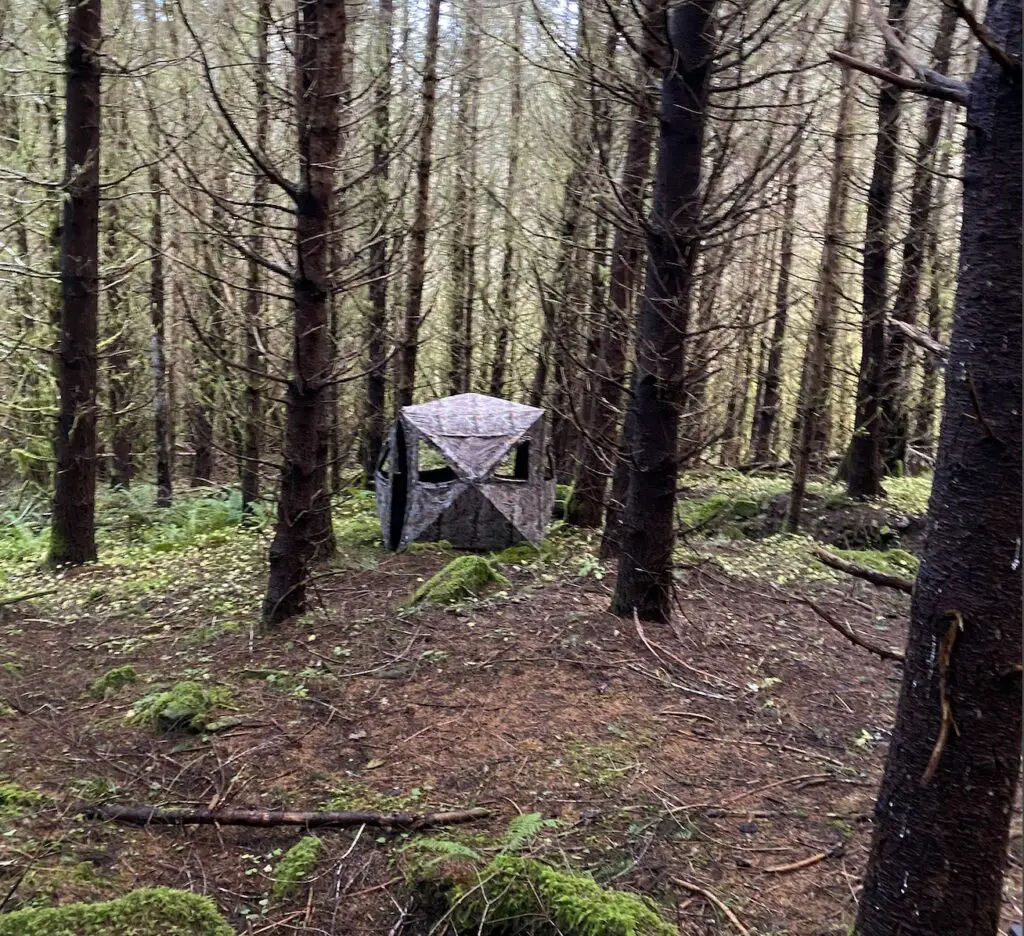
So this year, my plan was to keep an area near (but not too close to) the private land / public land boundary well supplied with apples and to place my pop-up blind about 30 yards from that spot with a good shooting lane to see the approach.
The above blind is pretty close to what I brought into the woods and setup.
A key factor in the placement of the apples/blind is that any animal I shot needed to be able to travel at least 100 yards after being shot and still be on public land. I also needed the area to be on a fairly decent game trail where there was a chance of an elk encountering the apples during a random travel.
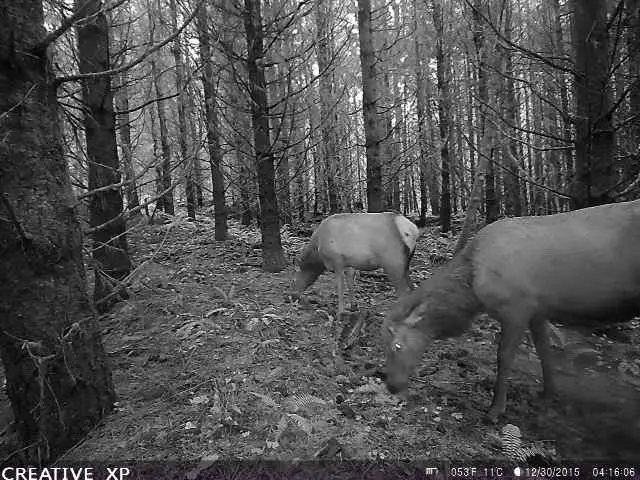
I dropped apples 2 days before the season opened and the very next day during shooting light I got these two cow elk coming in and eating every single slice. How cool and yet how disappointing. Couldn’t you have waited a day?
Another thing I found interesting, is the black-tail deer population is pretty decent in the area, but I typically don’t get these deer to eat the apples. However, deer will tend to be very active in the summer / early fall in consuming apples.
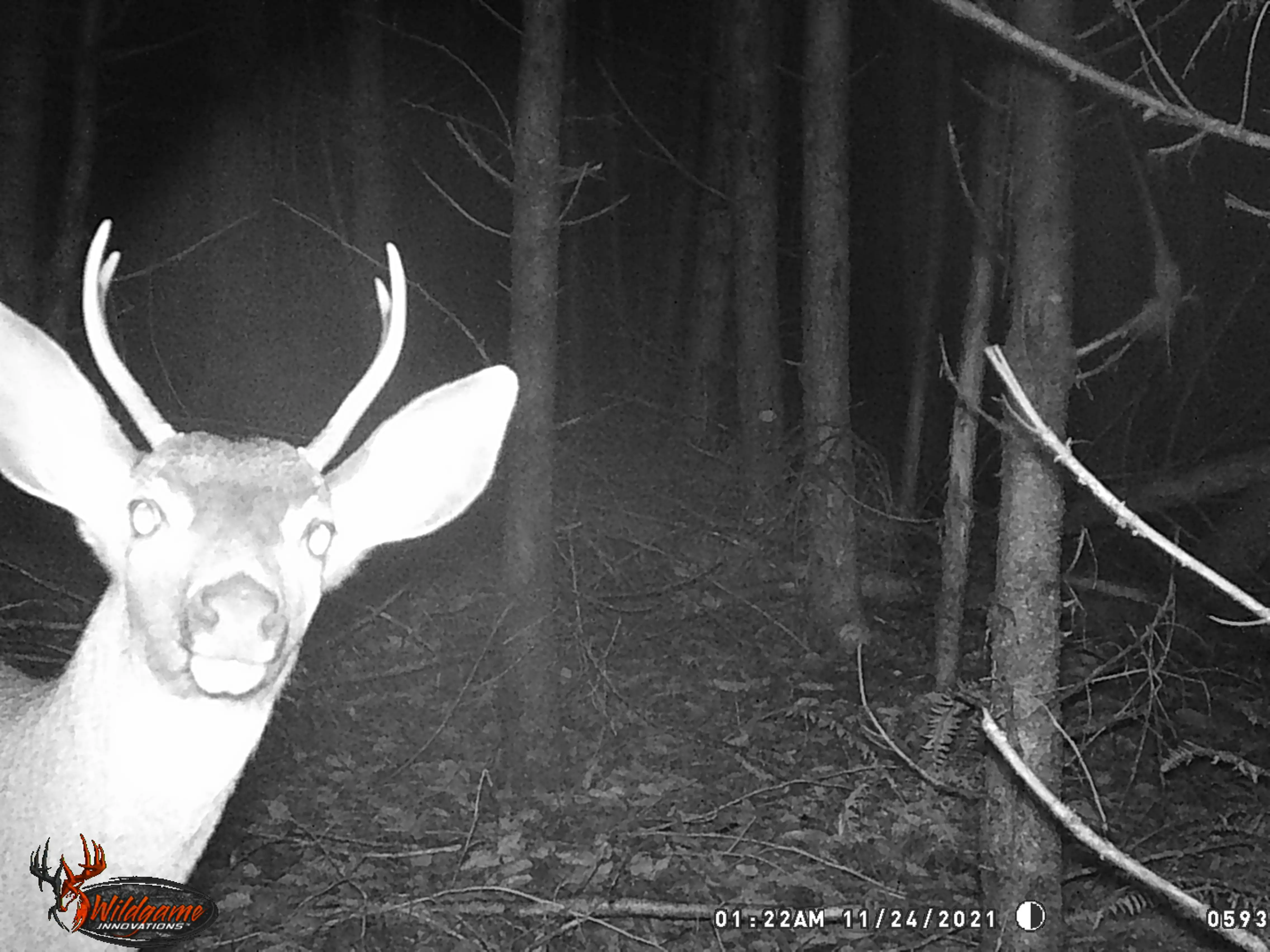
I did have multiple shot opportunities on deer passing within 15 yards of my blind though which was a great validation that my scent situation and movement within the blind was such that didn’t spook these animals.
Now, what was really cool on the deer front is I finally had a successful stalk and spot opportunity during the season where I could have taken a shot at close range on a deer that didn’t see me before I saw it. Again, no 2nd deer tag, so this was a moral victory more than anything else, but one I shall draw on for future deer hunting opportunities.
The only advice I can share related to that experience that might help someone repeat it with regards to getting close to deer is that one must move slowly and then move even more slowly than that. A snail’s pace, barely any sound, and don’t look at your feet. If you are moving at a pace that requires you to look at your feet, you are moving too fast. You must scan and see that deer head pop up and then completely stop moving or you will bounce that deer 100% of the time.
Now, for my favorite part of the hunting experience…I took a shot and missed an elk. How does one miss shooting at such a large target? First of all, I’m not a terrible shot (though you may disagree now that I told you I completely missed an elk). On the range, I’m fairly accurate even up to 100 yards with the peep sights (it’s illegal to use a scope on a muzzleloader in Washington state).
However, I made some terrible decisions before I ever took the shot, that I will forever learn from.
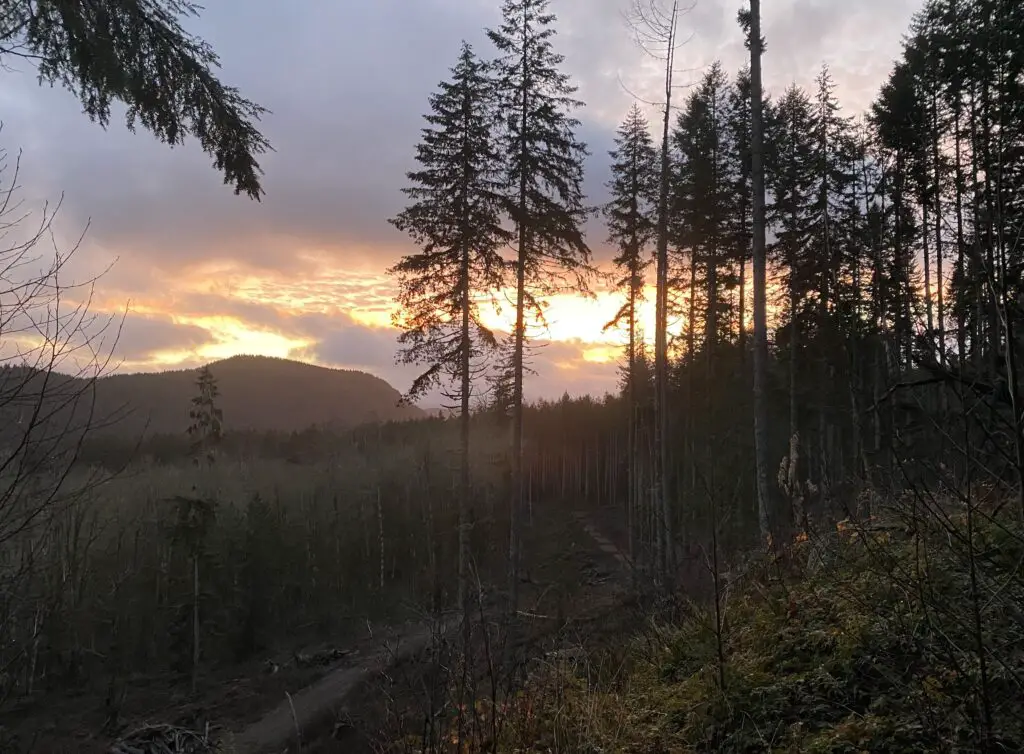
So I emerge from the forest on this ridge that’s maybe a hundred feet above a road to my left that kind of opens up to a small clearing about 400 yards away. I put my Vortex binoculars up to my eyes and start to scan the clearing. I immediately notice two cow elk grazing in the clearing.
These Vortex binoculars have been a huge factor in spotting critters far away or up close while in the densely wooded areas of western Washington.
My heart rate immediately spikes to Defcon 5. I mean it’s like I could only see red. I don’t know how else to explain the immediate surge of adrenaline and spike in heart rate. The last time I experienced that was during my first deer hunt when a legal buck emerged. That time I was in an elevated blind with my great friend and hunting partner telling me exactly what to do.
This time it was just me, the woods, and the elk. To say I lost my mind would be an understatement. I entered a primal mode that blocked all higher-order thought. I was a creature of pure instinct. Now…to be 100% instinct-based is not necessarily a bad thing, unless you have bad instincts or no instincts! And sadly this was the case with me the newbie elk hunter.
I quickly closed the distance between me and the elk down to about 150 yards. I could see more elk than just those two I spotted from 400 yards away as well. I was still about 100 feet or more above where they were, with only a few bare trees between me and the elk. There was conveniently a small dirt path that winded its way down to their location that wouldn’t make too much noise to traverse.
I quickly and stealthily shed my binocular case and pack. It was just me, the muzzleloader and the elk now.
I started to creep slowly down the path, heart racing a mile a minute and then what I dreaded finally happened. One of the elk looked up from her grazing and looked directly at my position. I froze.
My heart coming out of my chest now. I froze for what seemed like an eternity before she dipped back down to continue the grazing.
Whew!
This entire time I had been repeating bad advice in my head in a slightly panicked frantic way. The thought in my head was “I will NOT be telling the story of how I bumped these elk and didn’t even take a shot!”.
The fear of missing out (FOMO) was too strong. I wanted to get closer, but I knew I was too far for a high-percentage muzzleloader shot.
I sat down right where I had frozen a moment earlier. There was a stump I could use as a shooting rest about 8 yards away, but I didn’t want to move again and risk bumping the elk. So I decided I would take the shot right there, sitting down, elbows on knees supporting the forearm of the muzzleloader.
Now, I know my 270-grain bullet drops at 100 yards by a few inches. I knew I was further than 100 yards away….So I decided I would compensate by aiming slightly high. I was still on an elevated area aiming down to the elk.
I tried to steady my breathing, to make a stable shot slightly higher than the kill zone on the closest elk that was head down peacefully grazing. My heart rate and adrenaline were raging as I gently squeezed the trigger.
Boom!
A great cloud of smoke wafted down the hillside as I focussed on the elk I had shot at. All of the elk lifted their heads up and kind of looked around unsure of what had just transpired. After about 20 seconds of looking around, all of the elk (at least 10!) slowly walked back into the heavily wooded area adjacent to the clearcut.
I was confident I had missed completely at this point (which I’m grateful for given the bad judgment involved with the shot). The priority was to re-load and go look for any trace of blood. I reloaded, took a GPS waypoint from where I took the ill-fated shot, and made my way down to where the elk were just a few minutes prior.
No trace of blood. I thought about what had just happened, my brain and thoughts finally returning to my conscious control. I called one of my elk-hunting mentors. I later talked to another and they both said I did three things wrong:
- I shouldn’t have taken that shot from 135 yards away. If I had belly-crawled down to the bottom of the hill, I could have taken a much higher percentage shot from about 75-80 yards. This was my biggest mistake.
- If I was determined to take the faraway shot, finding a more stable shooting rest than elbows on knees (which is even more unstable for someone with long limbs such as myself) should have been a bigger priority to me.
- Finally, I shouldn’t have aimed high. I most assuredly missed high as it’s the only way I could have missed the entire elk. My bullet wouldn’t have dropped as much on a downward plane, so I should have just aimed for the kill zone vs aiming high.
I never had another opportunity to shoot an elk the rest of the time in the woods. That was it.
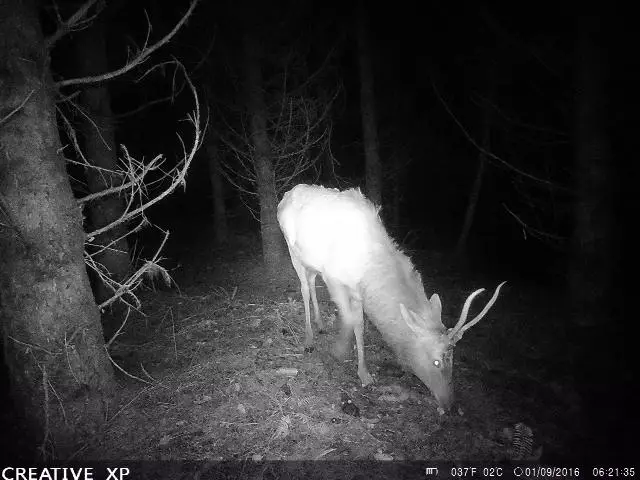
Near the end of the season, I had these two spikes come in on my apples multiple times, but sadly this is the one elk I couldn’t shoot.
What an incredible elk hunting season that ultimately ended in failure. However, failure is how we learn, so in that respect, I’m incredibly grateful for the experience, the lessons, and the people in my life who helped me process them.